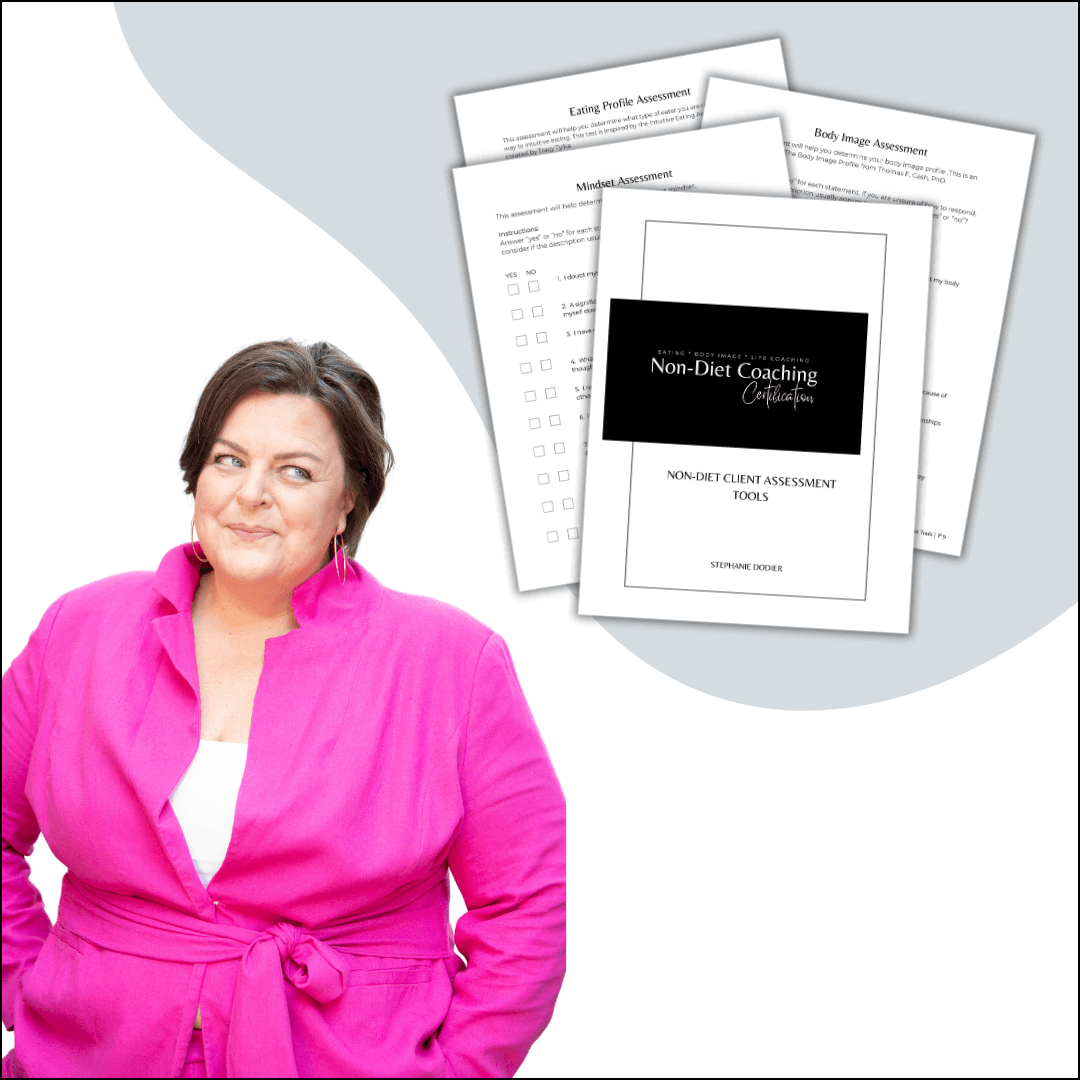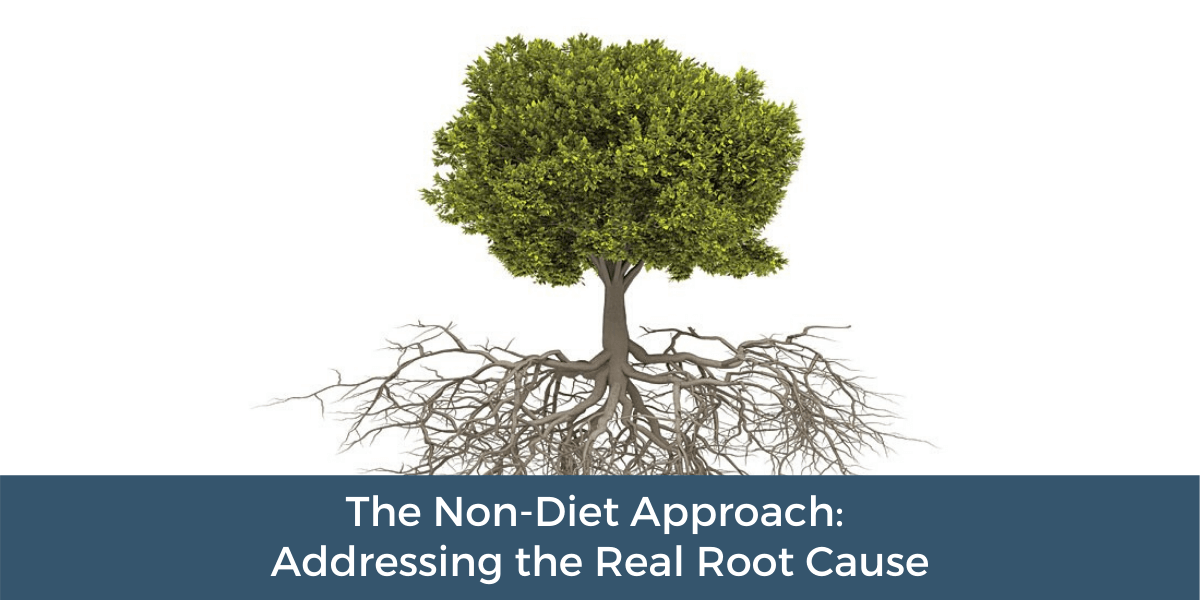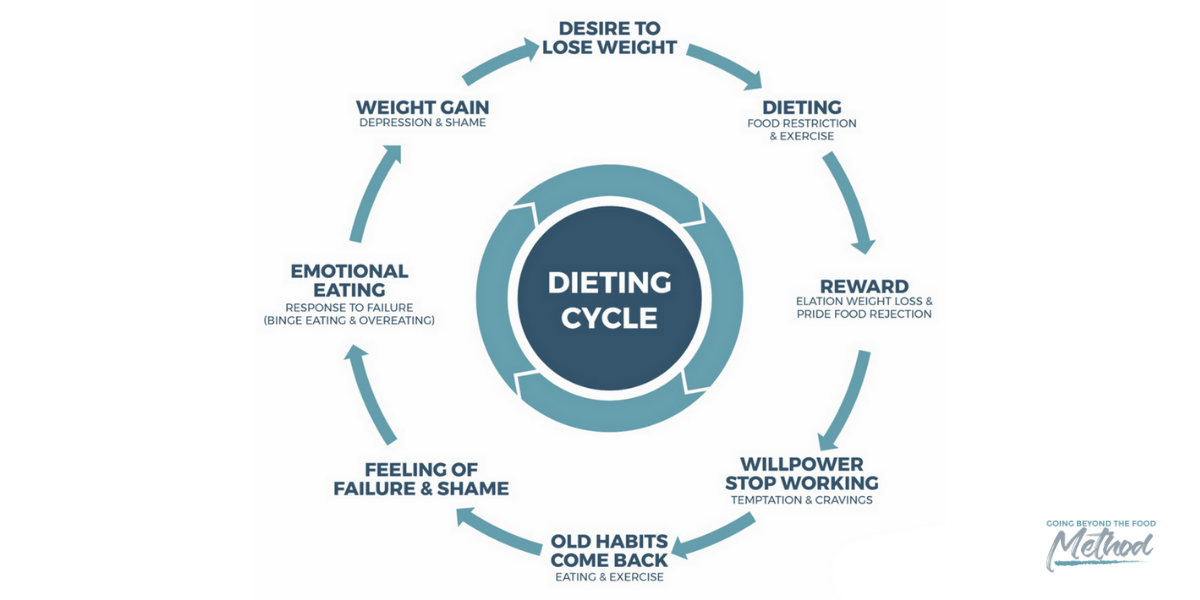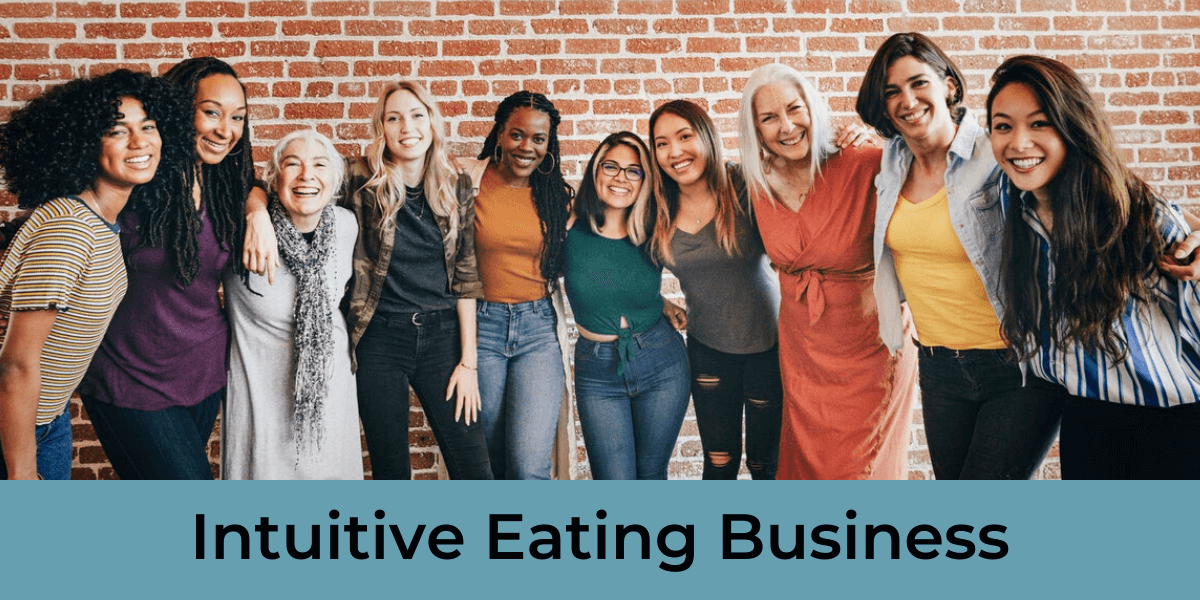You may have heard about the amazing, evidence-based intuitive eating benefits, and you probably want to learn how to eat intuitively.
For some people, intuitive eating may sound intimidating, but it doesn’t have to be. Actually, you’re just going to return to something you’d always done before you became part of the diet culture. (You’ll learn more about the diet culture further down below.)
You’re simply going to relearn how to be attuned to your body’s hunger and fullness cues and use them to guide your eating habits.
What does it mean to eat intuitively?

Intuitive eating is an evidence-based approach to eating that empowers you to be the expert of your own body. Over 100 research studies prove that it works.
Intuitive eating teaches you to have a healthy relationship with food. It empowers you to trust your ability to meet your own needs, distinguish between physical and emotional hunger, and ultimately develop body wisdom.
Moreover, intuitive eating fuels your innate ability to trust your body and meet your needs. That’s what makes it sustainable.
What Does an Intuitive Eater Eat in a Day?
There are no food restrictions in intuitive eating. As I will discuss in this article in a bit, intuitive eaters don’t label food as good or bad. They enjoy food and the experience of eating. They simply allow their body’s wisdom to guide them what and how much they should eat.
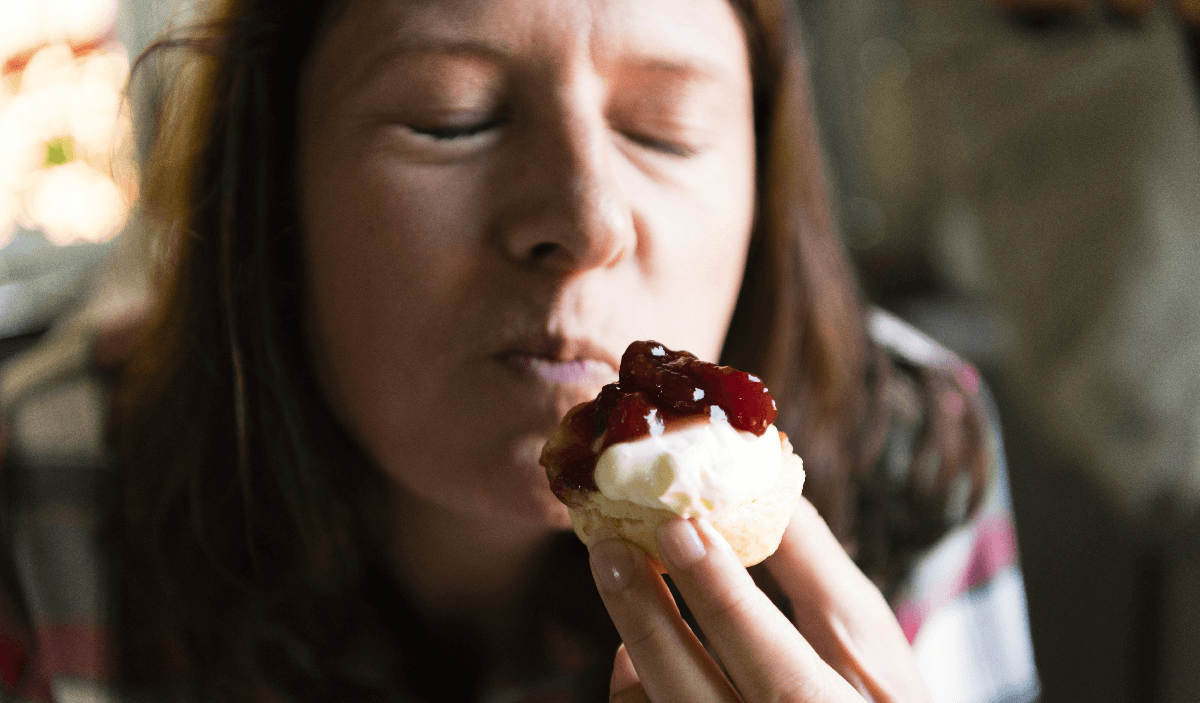
Can You Lose Weight By Eating Intuitively?
Intuitive eating may lead to weight loss or not. Your body’s response depends on a wide variety of factors including genetics and past dieting experiences.
That said, a number of intuitive eating studies show that eating intuitively is associated with lower body mass index (BMI). Intuitive eaters are also generally more physically active.
The main goal of intuitive eating isn’t really weight loss, but having a better relationship with food, which leads to better eating habits and improved health.
How to Start Eating Intuitively
So how do you stop dieting and start becoming an intuitive eater? Here’s a quick overview of the five steps to beginning your intuitive eating journey and building a healthier relationship with food:
- Step 1: Understand the diet culture and your power to choose.
- Step 2: Reject the diet culture.
- Step 3: Be present with your food.
- Step 4: Shift from external eating cues to your body’s internal eating cues.
- Step 5: Seek satisfaction from food.
Let’s look at these steps in greater detail:
Step 1: Understand the diet culture and your power to choose.
What is the diet culture? It’s defined as the worship of thinness and equating it to health and moral virtue. If you’ve been part of this culture, you might have spent your whole life thinking that you’re broken just because you don’t look like the “thin ideal.”
Diet culture promotes weight loss as a means of attaining what it perceives to be a higher status—the thin ideal. It oppresses people who don’t match up with its supposed pictures of health and attractiveness.
It compels you to spend a massive amount of time, energy, and money trying to shrink your body, even though intuitive eating research clearly shows that almost no one can sustain intentional weight loss for more than a few years.
The good news is, it’s just a cultural movement. Belonging to a cultural movement is completely optional and something that you can say “no” to. You have the power to make the choice to be free from this oppressive culture.

Share this Image On Your Site
Step 2: Reject the diet culture.
Reclaim your power! When you decide to reject the diet culture, the first thing you need to do is to change your environment. Throw out the books, the magazines, the cookbooks, and the programs that support the diet culture.
Check your phone and your computer and delete all the files that has to do with it. Unfollow social media accounts that uphold dieting myths as well as those that promote food restriction and over-exercising. Ditto for those that use weight-loss lingo.
Be aware that the people behind the diet culture are getting smarter these days. They sell the diet culture under the guise of promoting wellness. We saw that recently with Weight Watchers, which has been rebranded recently as “Wellness that works.”
The same is true with 30-day movements, detoxes, cleanses, elimination diet, and keto intuitive — all of these are part of the diet culture but are disguised as wellness programs. Get rid of all of those!
Follow new people. Read intuitive eating books. You can get started with these awesome reads: Intuitive Eating, by my mentor, Evelyn Triboli; Body Respect and Health at Every Size by Dr. Linda Bacon.
If you want more information, tools, and guidance on intuitive eating, go to my website and listen to my intuitive eating podcast. You can also follow me on social media. I’ll provide the links at the end of this article.
Step 3: Be present with your food.
Just before you eat, before you get into the act of putting food in your mouth, get rid of all the distractions. Turn off your phone or at least put it in the silent mode. Turn off the TV. Don’t read. Give yourself at least 15 minutes to be fully present when you eat your meal.
Use your five senses to fully enjoy your food. Feast your eyes on the colors and shapes. Take pleasure in the aroma and the texture. Savor the nuances of flavor. Enjoy the sounds of eating, especially when you’re eating something crisp or crunchy!
The outcome of being present with your food is satisfaction. One of the principles of intuitive eating is finding and seeking satisfaction and contentment with your food. When you feel satisfied and content, you’re not going to seek any more satisfaction from food until you’re truly physically hungry.
We did an entire podcast on being present while eating, mindful eating. I recommend that you listen to this episode that best describes how to eat mindfully. It’s super-helpful for those who want to learn to be more present when they eat.
Step 4: Shift from external eating cues to your body’s internal cues of hunger and fullness.
Honoring your hunger and respecting your fullness are two important tenets of intuitive eating. You have to get to know your body. You must be able to recognize the cues that your body sends to tell you that you need to eat as well as the cues that tell you that you’ve had enough food.
Dieting disconnects us with these cues because it says, “Don’t listen to your hunger and fullness. Follow these rules.” Those who have counted calories and macros know how this feels.
Now, intuitive eating is not simply eating when you’re hungry and then stopping when you’re full. That’s not all there is to it. It’s about reconnecting with your body so you can follow your internal cues.
Step 5: Seek satisfaction from food.
As I said earlier, when you are present with your food, one of the things that happens is that you start being content. You start to find joy in the experience of eating. To find that joy, you have to eat food that you like.
That means you shouldn’t categorize food as good or bad, because if the food you like to eat happens to be “bad,” that means you can’t have it and you’ll never feel content.
(Check out my intuitive eating podcast episode, Good or Bad Food: Healthy versus Unhealthy Food, where the concept of food labeling is explored.)
Now, here’s a little footnote on this: Whenever I talk about seeking satisfaction from food, I usually hear people say, “Well, if I eat whatever I want, I’m going to eat sugar all day,” or “I’m going to eat carbs all day,” or “I’m going to eat McDonald’s all day.”
With regard to intuitive eating, seeking satisfaction from food is not just about eating anything we want. It’s more about noticing how certain foods make us feel. If you’re attuned with your body and you eat sugar all day, I guarantee you that you’re not going to feel good.
Being attuned to your body will help you make the right food choices. Your body has an inherent wisdom; it knows what’s good for you.
Ready to Get Started With Intuitive Eating?
You can access all of our services on our work with us page. We have a number of programs and service levels enabling us to serve most women:
Free Resources and Masterclasses: Get started and get to know us better!
Private coaching with Stephanie and her team Stephanie and her team of Certified Non-Diet Coaches are waiting to support you in a one-to-one setting with an individualized plan.
Undiet Your Life group coaching program is for women to learn how to eat intuitively, become body neutral, and learn self-coaching at their own pace while being supported in a group setting by Stephanie and her team of Certified Non-Diet Coaches.
Non-Diet Coaching Certification for professionals ready to integrate the Going Beyond The Food Method™️ in their practice and for women wanting to become Certified Coach and build a business coaching other women beyond the food.



